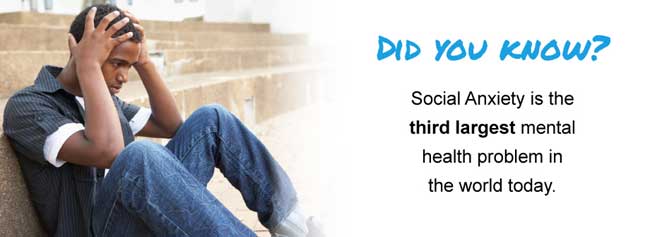Social Anxiety Disorder, What Is It?
Written by Maurice Saab
March 2, 2015
Most of us would admit to feeling shy from time to time or anxious about public speaking: the larger the crowd, the greater the terror. It's also not unusual to feel awkward while making small talk with unfamiliar or uninteresting people. But a significant number of people find these situations utterly mortifying.

Social anxiety disorder (SAD) is diagnosed when the fear of criticism or rejection by others becomes chronic and debilitating. People with SAD see themselves as incompetent and inferior, and others as judgmental and hostile. They believe they will be rejected when other see how anxious and awkward they are or hear the stupid or boring things they say.
While criticism is an occasional and unpleasant part of life for most of us, people with SAD believed they will be criticized and rejected virtually every time they are around other people. They also believed that there is high personal cost to being criticized- if others criticized me, then I am a failure.
SAD dictates what courses can be studied (those that done require speaking in front of the class), what jobs can be apply for (able to be done alone and preferably from home), what hobbies can be engaged in (solitary ones), and who fits the bill as a potential life partner (those not requiring a chaperone to parties and work functions).
Without a strong sense of self (who am I) and self-acceptance (I am worthwhile), it is exceedingly difficult to express our preferences and get our needs met by others. Unsatisfying relationships with domineering friends and partners are therefore common for people with SAD. Low -self esteem, social isolation, and depression can follow.
In some ways, the digital age makes life easier with people SAD. A full day's work can be done online without seeing another person. Social media create the illusion of friendship with just a few simple clicks. Buy the very human need for genuine connection remains unmet.
Let's find out, what are some of the symptoms of SAD; sweating, blushing, heart palpitations, trembling, and urge to escape are common physical symptoms of social anxiety. People with SAD become highly self-conscious and imagine that others can clearly see these signs of anxiety. They expect to be judge as weak and incompetent as a consequence.
Avoidance is the most important strategy for managing social anxiety. That prevents any possibility of being criticized, but also robs sufferers from discovering that criticism is far less likely and less traumatic than expected. When social situations can't be avoided, more subtle ways of trying to prevent criticism are relied upon, such as using alcohol as a social lubricant, mentally rehearsing conversation, or staying quiet. But these strategies can backfire and actually cause the criticism they were trying to prevent.
Source: Compiled by GMB Staff - Global Media Buzz










